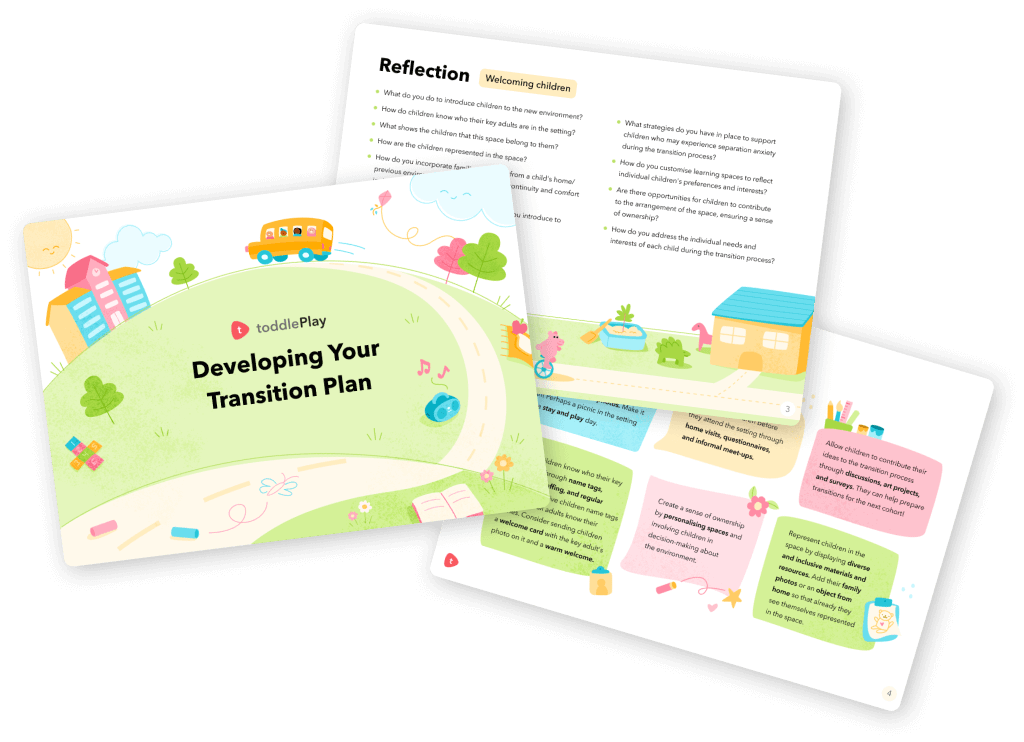Embarking on new experiences and making changes to our routines can be incredibly exciting and enjoyable. However, it’s completely normal for uncertainty and a hint of fear to accompany these moments. This is especially true for young children and their families when they start at a new childcare setting, move to a different class, or transition to a new school. We totally get this, and have put together thoughtful approaches that can make these transitions smoother, more secure, and ultimately successful for everyone involved.
Transitions occur as children move into a new setting, such as from home to an early years program. They also happen as children progress through a setting, transitioning from one class to another, like moving from Nursery to Pre-Kinder or from a Baby Room to a Toddler Room. Finally, there are transitions that take place beyond a specific setting as children continue their educational journey in school or a new learning space.
When considering transitions, it’s essential to view them as an ongoing journey rather than isolated events that occur yearly. Regardless of the type of transition, we can always warmly welcome children and families and provide the support they need to build relationships and adapt to their new environment. By involving all relevant parties in the process, we can adopt a collaborative approach that fosters connections, strengthens pedagogical alignment, and bridges any gaps between environments.
What are some strategies to support smooth transitions in early years settings?
- Establish a Welcoming Environment: Create a warm, inviting physical space by using visual cues and familiar images to help children feel at ease and identify with the environment.
- Build Relationships: Cultivate trust and understanding through one-on-one interactions with children and families, addressing their individual needs and interests.
- Welcome Comfort Objects: Have a beloved item nearby, such as a familiar stuffed animal or blanket, that can provide a sense of reassurance and comfort during times of change and transition.
- Include Familiar Faces: Involve familiar faces, like previous educators or familiar classmates, to visit and spend time in the new setting to provide a sense of continuity during a transition.
- Support a Gradual Transition: Consider implementing a gradual transition process to provide a safety net for children, while steadily encouraging their independence and confidence.
- Incorporate Visual Timetables and Reminders: Use visual aids such as timetables, schedules, and reminders to support children’s understanding of daily activities and transitions.
- Engage in Transition Activities: Reading books about transitioning to a new setting can help children develop a positive mindset and understand common experiences in preparation for predictable changes.
- Encourage Peer Interactions: Facilitate opportunities for children to engage with their peers to cultivate friendships and establish a sense of belonging within the new setting.
- Facilitate Emotional Expression: Create a safe space where children can freely express their feelings as they experience changes brought about by the transitions.
- Implement Continuous Evaluation and Adaptation: Consistently evaluate and adjust strategies, collaborating with families to gather feedback and ensure smooth transitions for children.
How to use this resource:
- Invite early years educators to consider what transitions currently look like.
- Collaborate with educators and families to generate ideas to strengthen transitions in, through, and beyond the setting.
- Plan ahead to create a year-long process to support and strengthen transitions.











